8 Hidden Places in Your Home Where Harmful Dust Is Piling Up

Despite the best cleaning efforts, dust can be very hard to keep on top of. “Dust is more than just bits of dirt and sand from outside,” says Dr. Christopher S. Baird, via West Texas A&M University. “In fact, any solid matter that is broken into small enough bits to be blown around becomes dust. Outside, common sources of dust are dirt, sand, pollen, and pollution. Indoors, common sources of dust include dead skin and hair cells from humans, the carcasses and waste products of microscopic creatures such as dust mites, as well as worn down bits of clothing and furniture.” Here are 8 unexpected places dust could be accumulating in your home.
RELATED: Deep Clean Your Home Without Toxic Chemicals.
1
Toys and Stuffed Animals
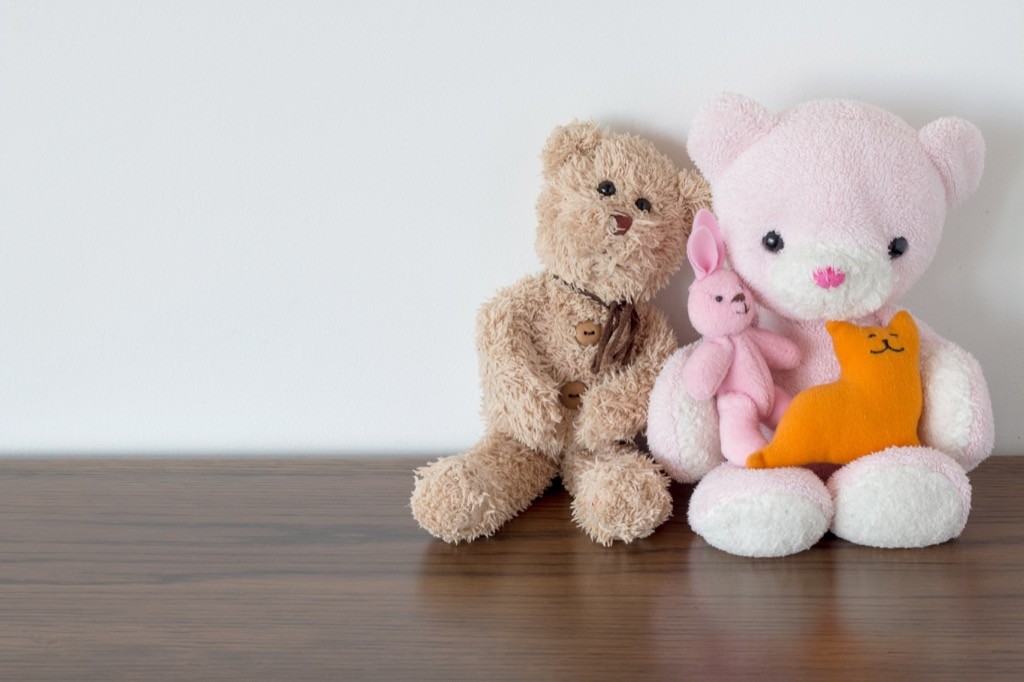
Your children’s favorite toys may be gathering dust. “Those beloved stuffed animals that snuggle up with your children every night are as attractive to dust mites as your pillows and bedding,” according to E. Smith Heating & Air Conditioning. “Washing stuffed animals regularly is the best answer, but not all plush toys can withstand a trip through the washer. If you can’t wash your toys, place them in a sealed plastic bag in the freezer. After freezing, take them outside and shake vigorously to get rid of dust and other allergens.”
2
Overhead Surfaces

Overhead surfaces are the easiest places for dust to accumulate without you noticing. “Start at the top of the room and work down, so any dust that falls while you are working will be picked up by the time you are working at floor level,” Mary Gagliardi, Clorox’s in-house scientist, tells Better Homes & Gardens. “Remove dust and grime from overhead surfaces that you may otherwise miss: the narrow top of painted picture rails, door trim, doors, the tops of painted kitchen cabinets and baseboards.”
3
Ventilation System
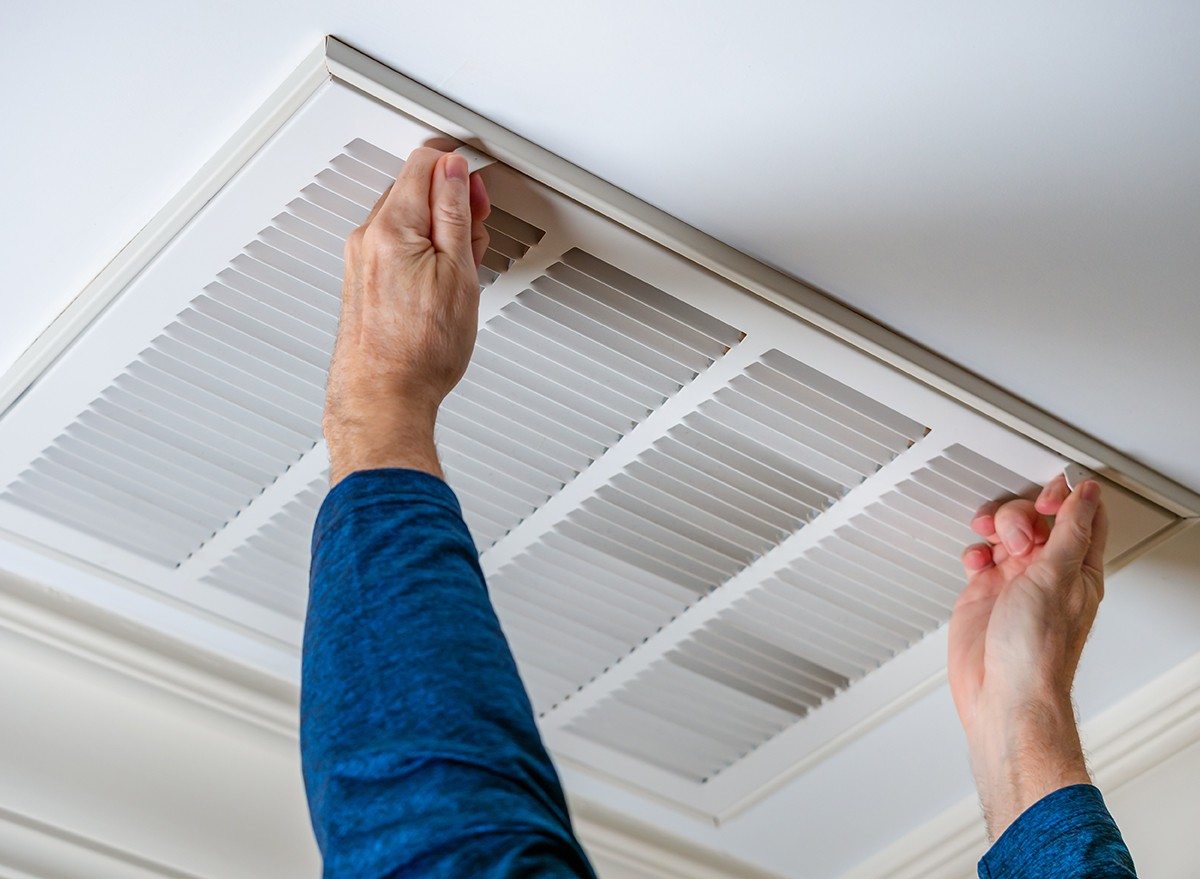
Your ventilation system needs to be regularly checked for dust buildup. “Whether you are heating or cooling your home, dust moves throughout your home while your heating and cooling system is functioning,” according to Dust Doctors.
4
Clutter
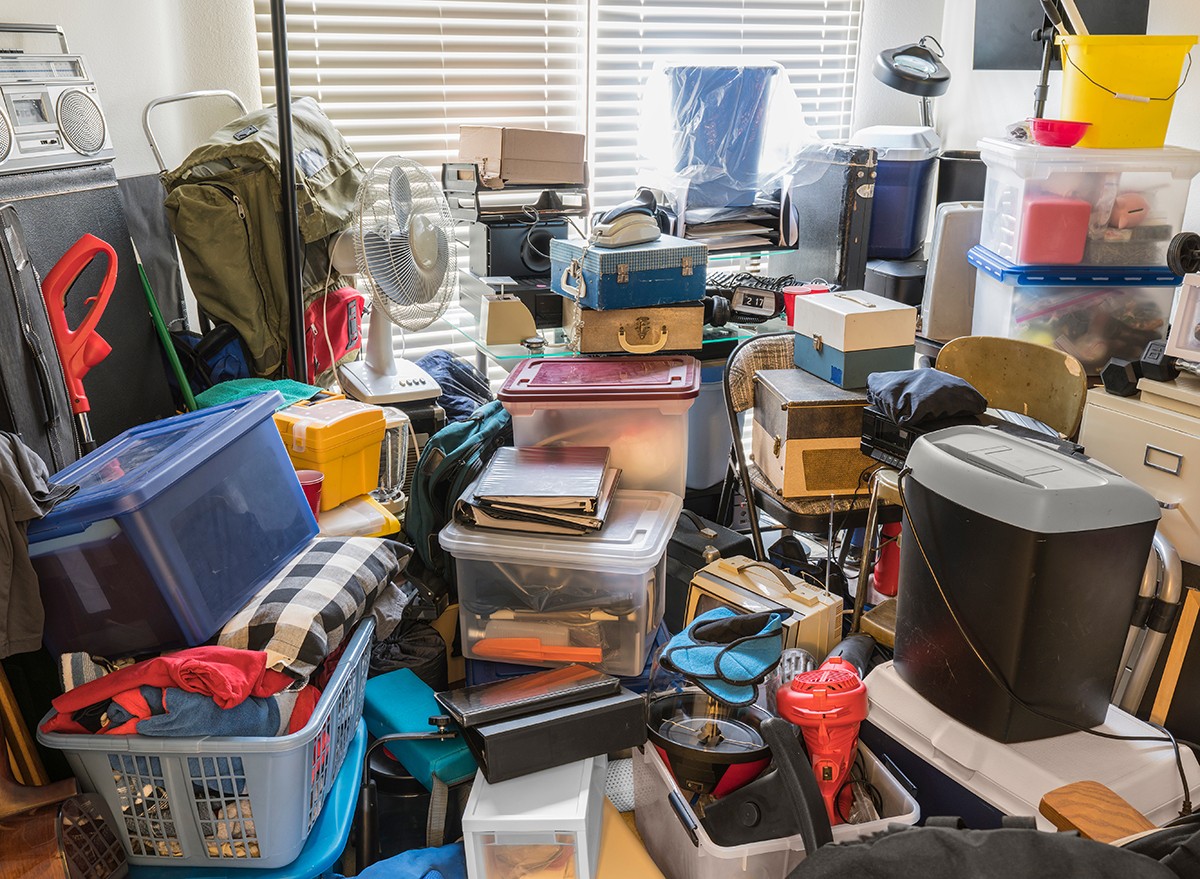
Clutter in your entryway is a dust magnet. “Piles of junk and clutter are just sitting there waiting for dust to gather,” according to Merry Maids. “When determining how to reduce dust in your home, you want to ensure you keep this chaos in check. Identify your home’s most cluttered areas, like your entryway, mudroom, closets or kitchen counter, and have the family pitch in to keep these rooms and surfaces nice and tidy.”
RELATED: “Neat Freaks” Share 8 Cleaning Secrets for a Spotless Home.
5
Computer Keyboards

Don’t neglect to clean your keyboards. “Computer keyboards attract dust, dirt, and bacteria,” according to Bob Vila. “Every so often, pick up the keyboard, turn it upside down, and shake it—you’ll be amazed at what falls out! For deeper cleaning, use compressed-air spray. Unplug the keyboard, turn it upside down, and spray all the keys with compressed air. Wipe with a clean, damp cloth.”
6
Dust In the Dryer
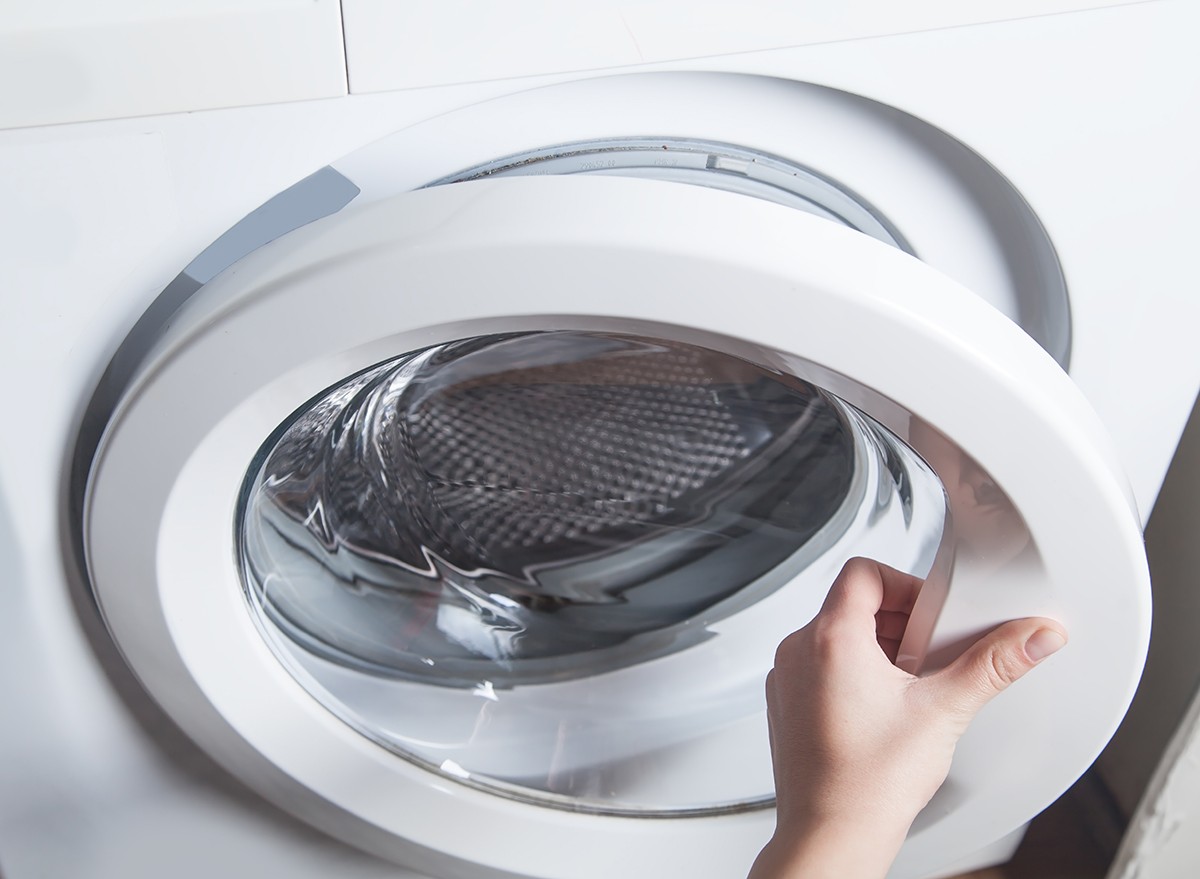
Drying your clothes creates dust, experts say. “Your clothing creates dust because it’s made of material,” according to Dust Doctors. “While you are drying clothes, your dryer attempts to collect all dust in your lint trap or by expelling it from your home using the duct connected in the back of the unit, but it’s not 100% effective.”
7
Under the Fridge
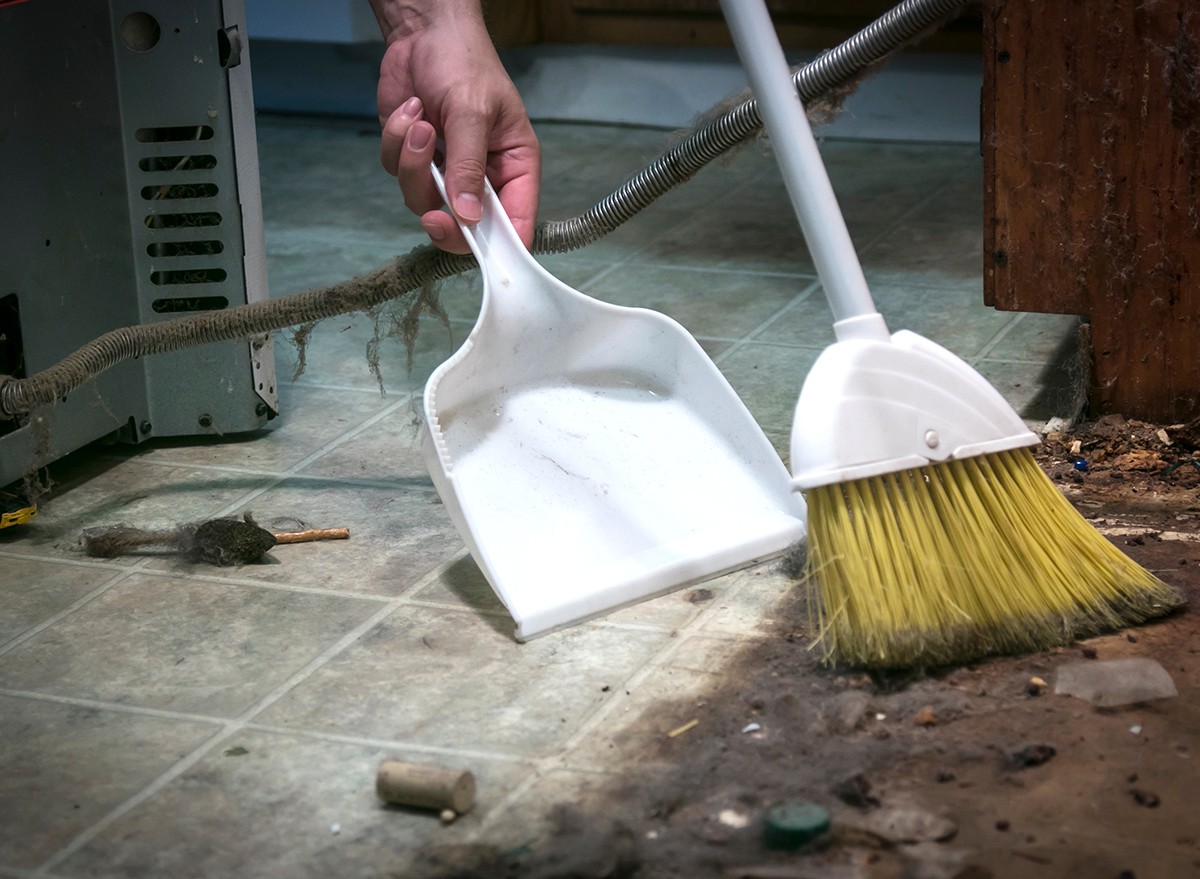
When was the last time you had a look under the fridge? “The fridge is a dirt and dust magnet from all angles,” according to Apartment Therapy. “Even if you remember to clean out the inside regularly and manage to clean your kitchen pretty deeply on a regular basis, we bet you’re not pulling out that fridge every week to vacuum under and around it, and we bet that the top (unless you happen to be tall or have tall housemates) has a layer of dust that settles on its surface (and the surfaces of anything you might have stored up there). The simple cleaning solution: put a deep around-the-fridge clean on your regular monthly to-do-list to help keep this area dust-free more often.”
8
Ceiling Fans
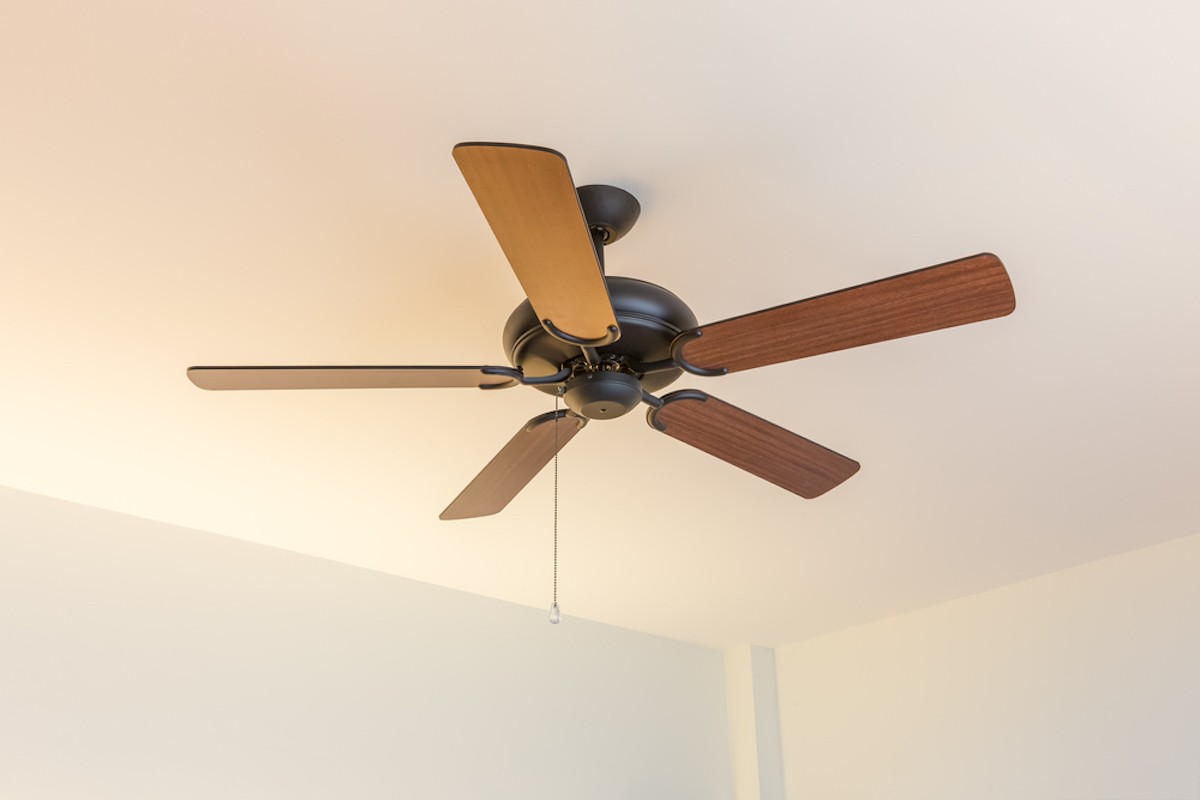
Ceiling fans are dust-magnets. “One of the dirtiest jobs around the house is cleaning ceiling fan blades,” according to Bob Vila. “The thickness of the dust pile that can amass on the tops of the blades is pretty revolting. Even worse, that dust gets dispersed when the fan is turned on. Before tackling fan cleaning, spread an old sheet or blanket—something washable—over furniture or rugs that are beneath the fan. Get out a step ladder, and using a soft rag, gently brush the dust off the fan blades.”
RELATED: How Often Do You Wash Your Towels?